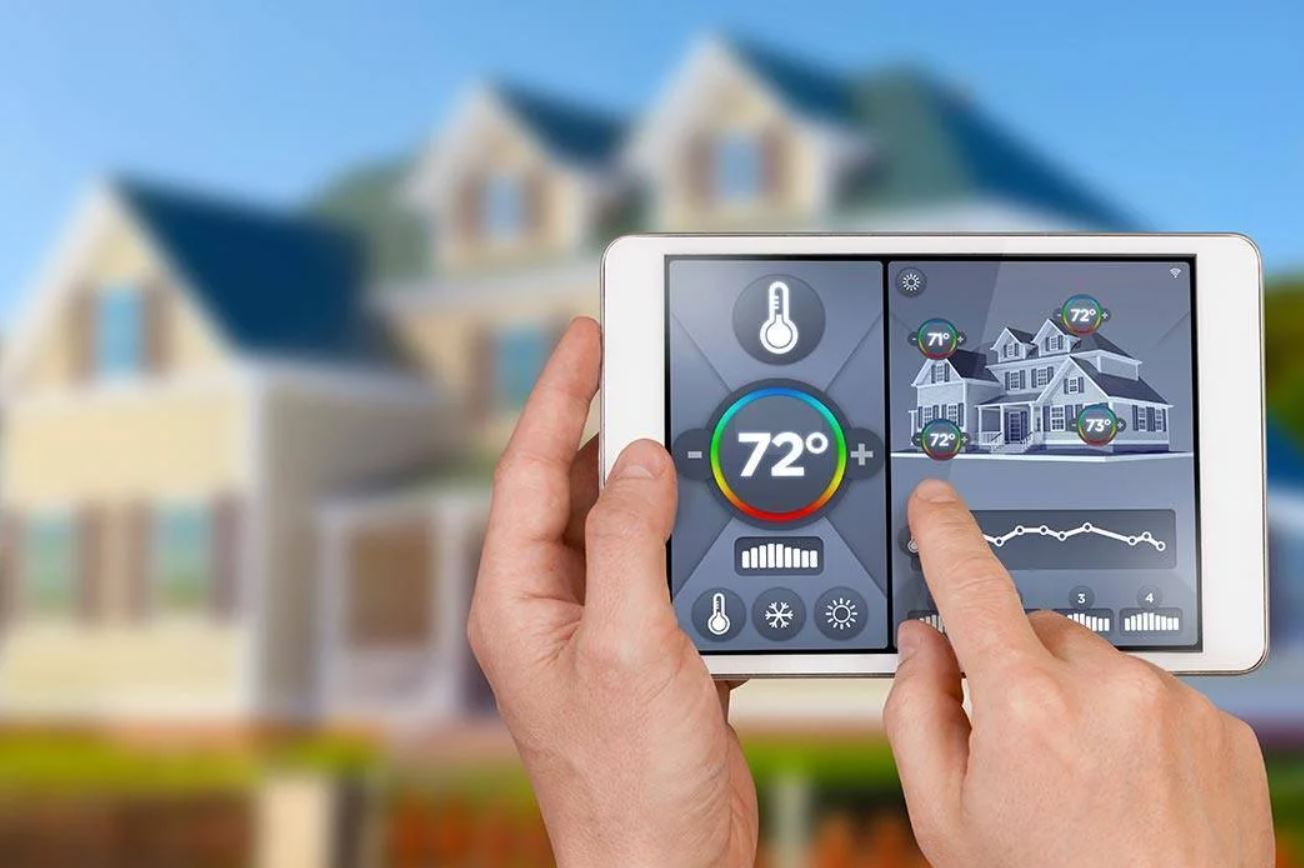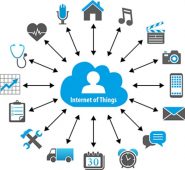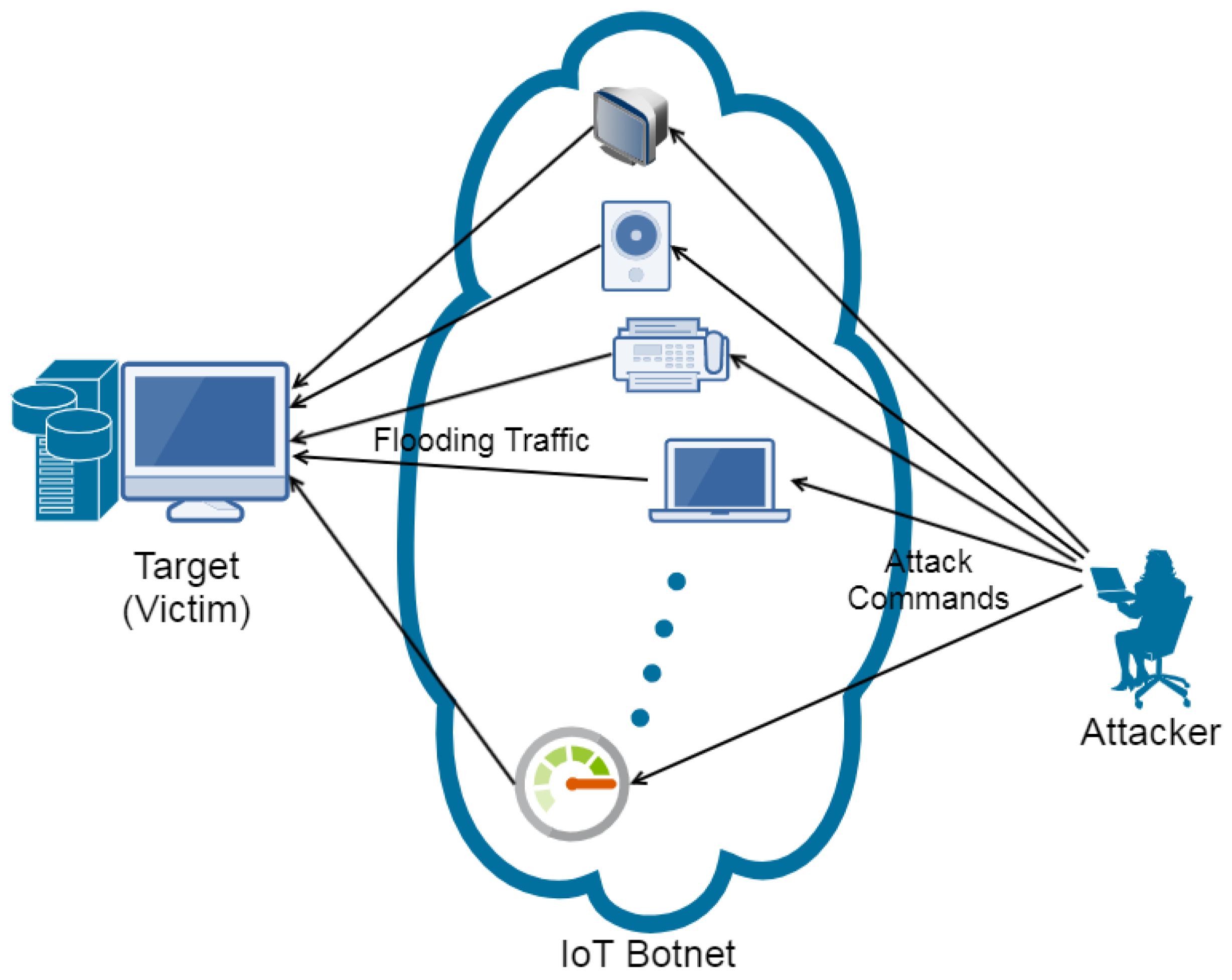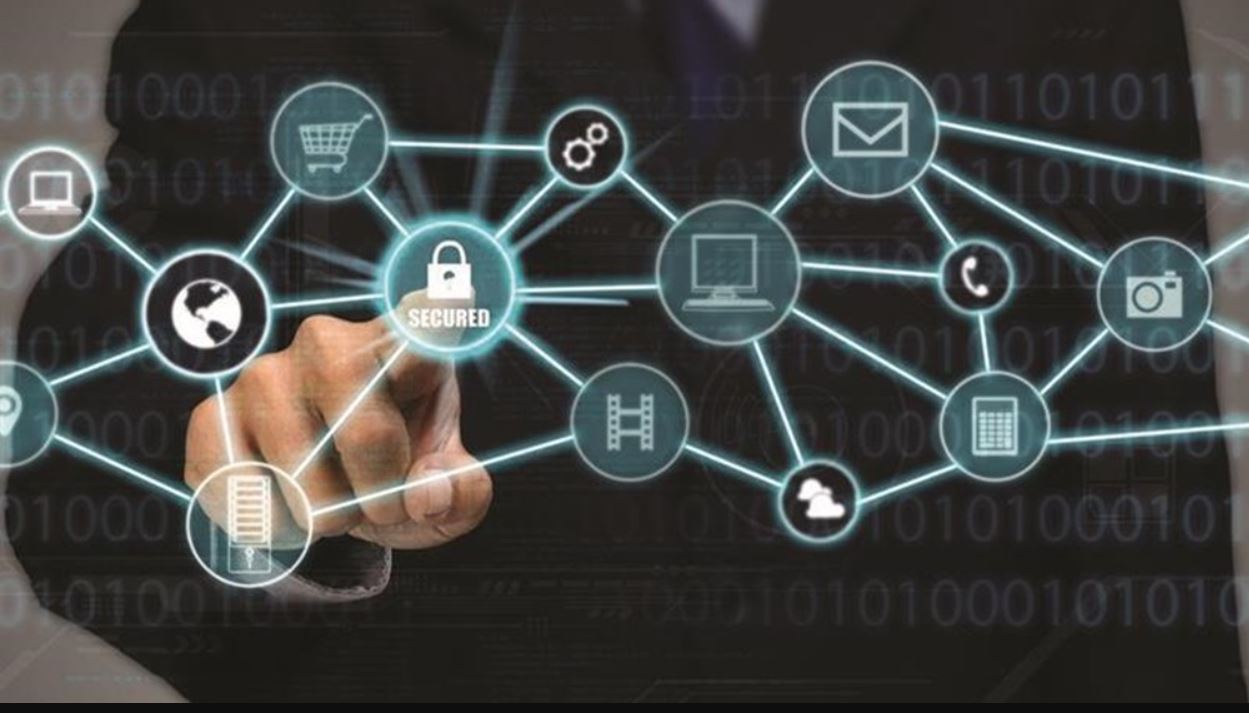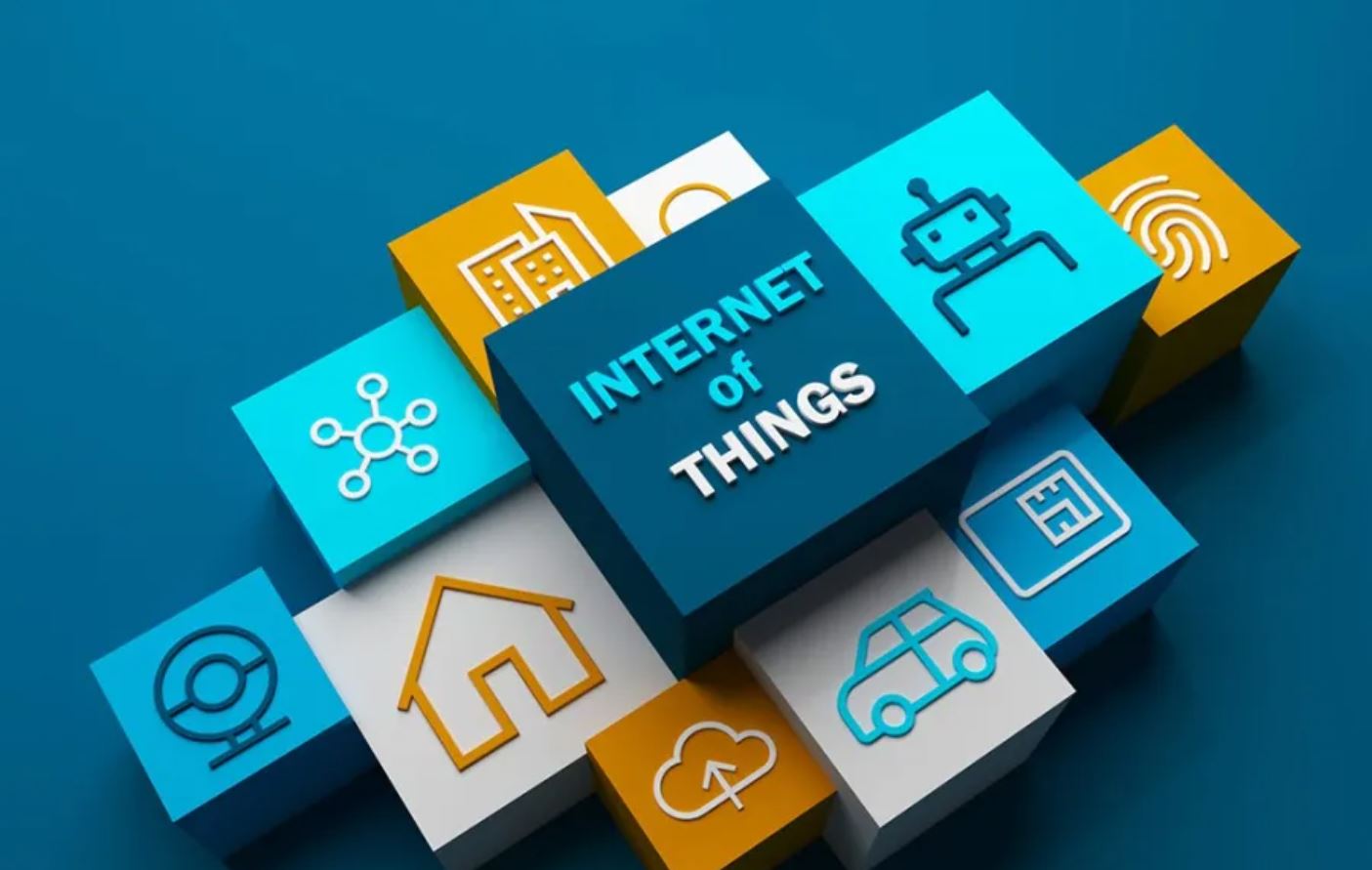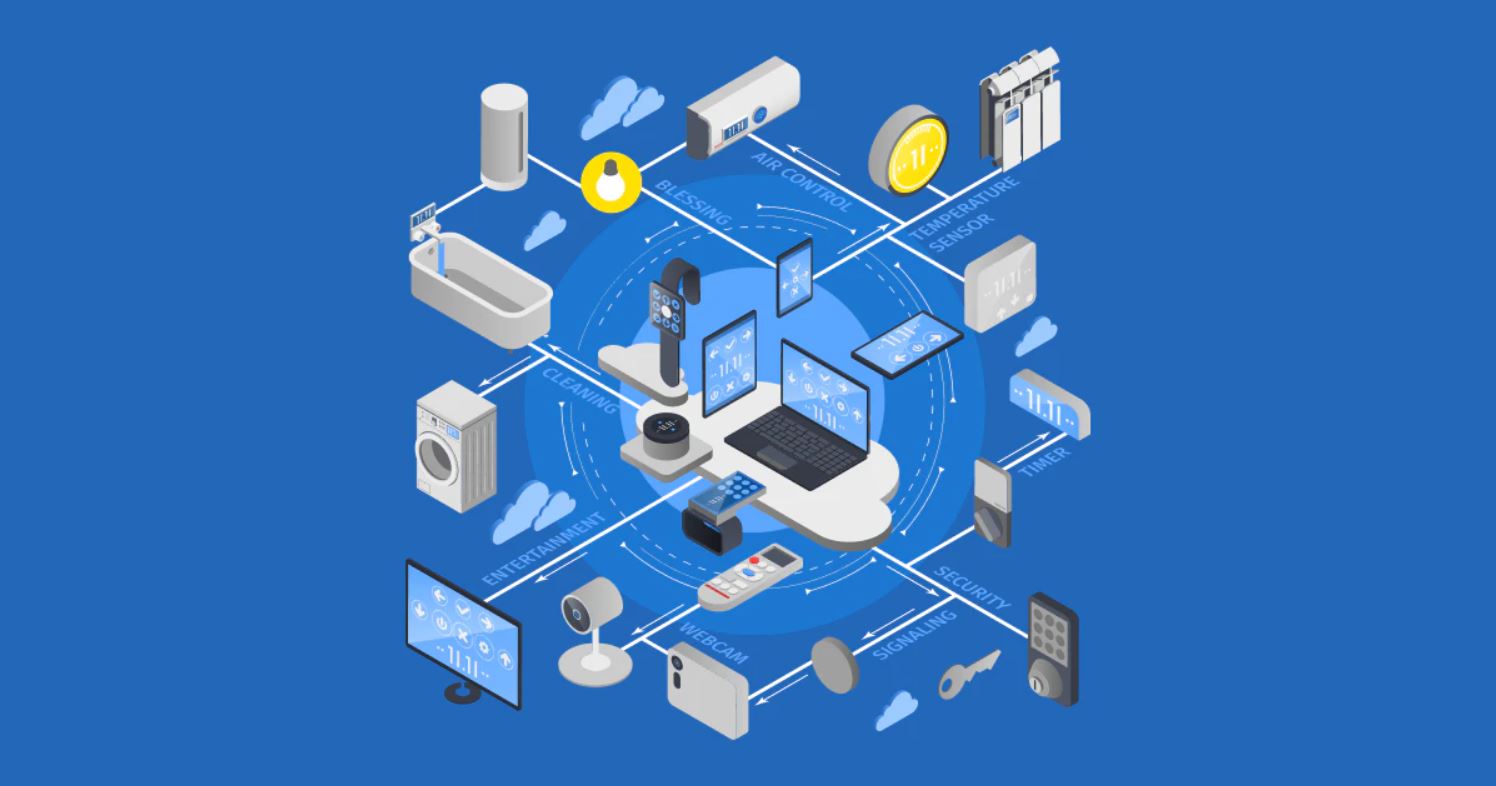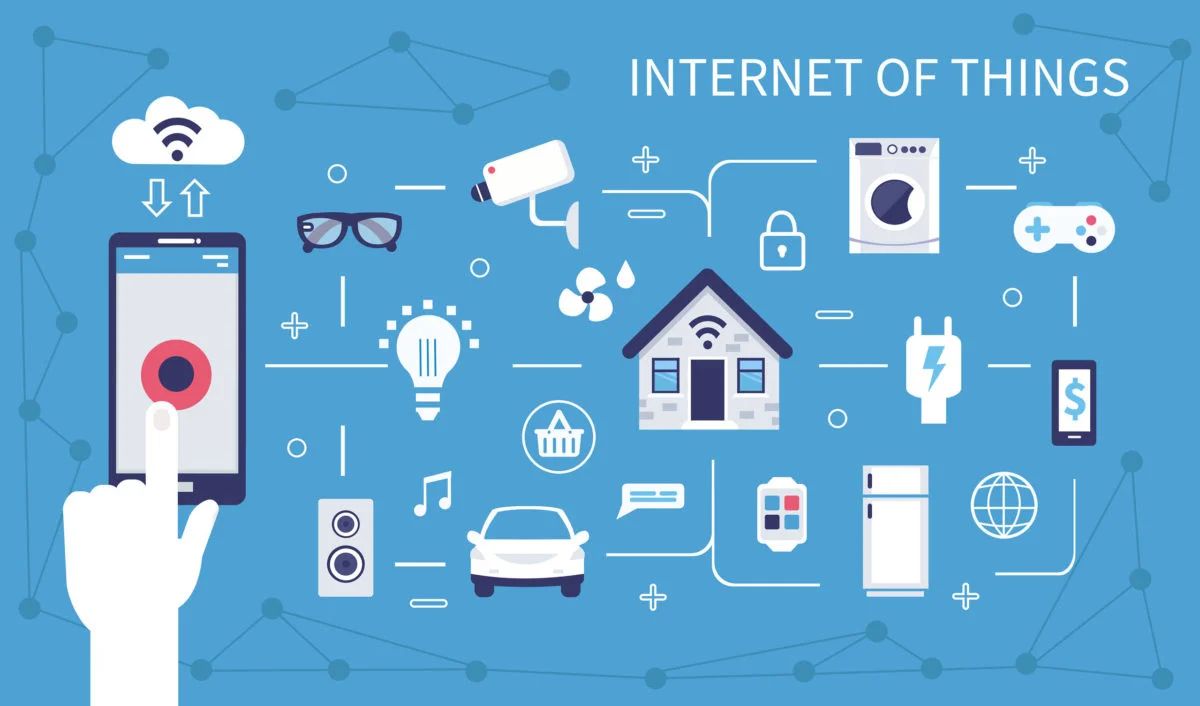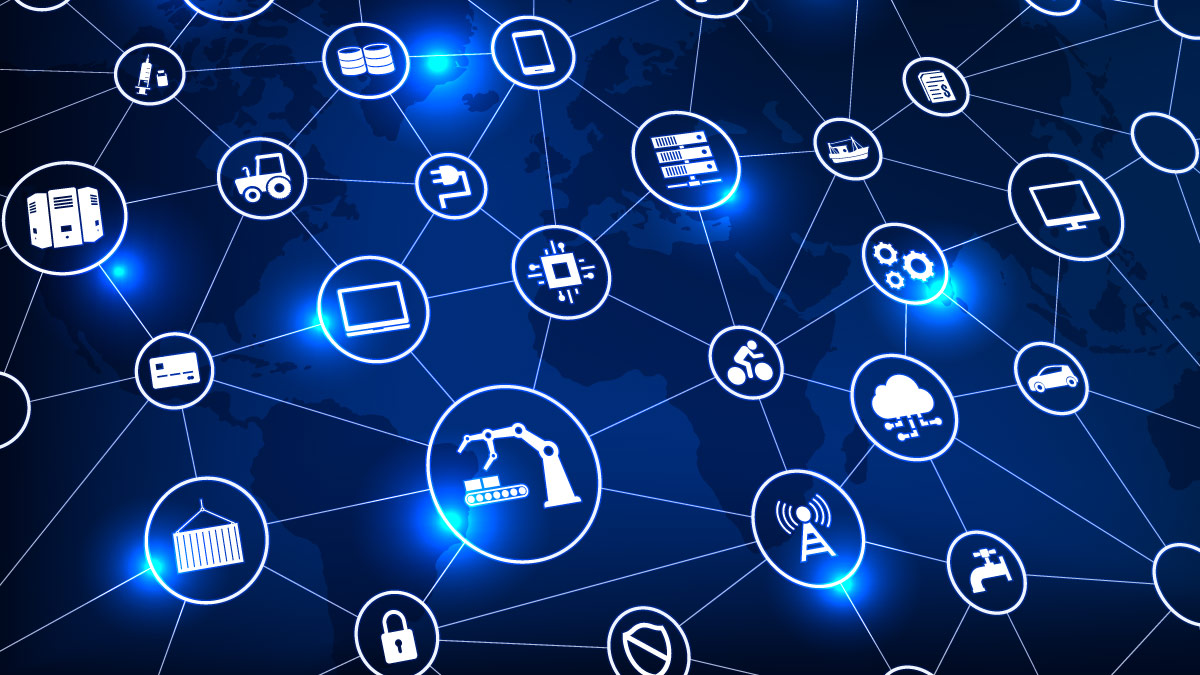Introduction
The Internet of Things (IoT) has revolutionized the way we interact with technology and has brought countless benefits to our daily lives. From smart homes and wearable devices to industrial automation and healthcare systems, the potential applications of IoT are vast and ever-expanding. However, along with these advancements come a myriad of challenges that must be addressed to ensure the smooth and secure functioning of this interconnected network.
As IoT devices become more prevalent in our homes, workplaces, and public spaces, it is crucial to understand and navigate the challenges that come with this technological landscape. This article explores the main challenges faced by the IoT ecosystem and delves into the implications they have on security, compatibility, data privacy, interoperability, scalability, connectivity, power consumption, cost, and ethics.
By understanding these challenges, we can work towards comprehensive solutions that not only improve the functionality of IoT devices but also safeguard our privacy, enhance efficiency, and promote ethical practices. Let’s delve into the intricacies of these challenges and explore their impact on the development and implementation of IoT technology.
Security Risks
One of the primary concerns surrounding the proliferation of IoT devices is the security risks they pose. With the interconnectivity of various devices and systems, hackers and cybercriminals have more potential entry points to exploit. Weak authentication mechanisms, insufficient encryption, and vulnerable firmware are just a few of the security vulnerabilities that can compromise the integrity of IoT devices.
Compromised IoT devices can lead to severe consequences, including unauthorized access to sensitive data, privacy breaches, and even manipulation of critical systems. For example, a hacker gaining control over a connected vehicle’s systems could have devastating effects, endangering lives on the road. Similarly, a compromised smart home device could grant unauthorized access to personal information or allow unauthorized individuals to gain physical access to the home.
The challenge lies in designing and implementing robust security measures to protect against these risks. Manufacturers must prioritize regular software updates and patches to address vulnerabilities and stay ahead of evolving cyber threats. Improved authentication protocols and encryption techniques, such as two-factor authentication and end-to-end encryption, can also enhance security.
Moreover, industry-wide collaboration and standards development are crucial to ensure consistent security practices across different IoT products and platforms. Governments and regulatory bodies play a vital role in establishing legal frameworks and enforcing security standards to protect consumers and businesses from potential breaches.
Addressing security risks in the IoT ecosystem is an ongoing challenge that requires constant vigilance and proactive measures. By strengthening security practices, manufacturers and users can mitigate threats and build a more secure IoT environment for all stakeholders involved.
Compatibility Issues
One of the significant challenges faced by the Internet of Things (IoT) is compatibility issues. With a multitude of devices, protocols, and platforms in use, achieving seamless integration and communication between different IoT devices can be a complex task.
Compatibility issues arise when devices or systems have different protocols and standards that prevent them from effectively exchanging data and information. This can result in interoperability problems, limiting the potential applications of IoT technology and hindering its widespread adoption.
For example, a smart home ecosystem that uses different communication protocols, such as Zigbee, Z-Wave, and Wi-Fi, may face difficulties in connecting and controlling devices from different manufacturers. This lack of interoperability can frustrate users and potentially render some devices useless if they cannot communicate and work together effectively.
Addressing compatibility challenges requires collaboration between industry stakeholders, standardization bodies, and technology companies. Developing and adhering to common protocols and standards can alleviate interoperability issues and ensure seamless communication between IoT devices.
Efforts are also being made to develop middleware solutions that can act as intermediaries, translating between different protocols and facilitating interoperability. These middleware platforms enable devices to communicate and exchange data regardless of the underlying protocols they use.
Furthermore, the adoption of open-source platforms and frameworks can promote compatibility by providing developers with standardized tools and libraries that are compatible with various IoT devices and platforms. Open-source software allows for greater flexibility and encourages innovation by fostering collaboration and knowledge sharing.
Ultimately, compatibility issues in the IoT ecosystem need to be addressed to unlock the full potential of interconnected devices and systems. By establishing common protocols, promoting open-source development, and investing in middleware solutions, the industry can overcome compatibility challenges and ensure a seamless and integrated IoT experience for users.
Data Privacy Concerns
With the widespread adoption of Internet of Things (IoT) devices, data privacy has become a major concern. The sheer volume of data collected by IoT devices, including personal and sensitive information, poses significant risks if not handled securely and responsibly.
Due to the interconnected nature of IoT, data can be collected from multiple sources, including sensors, cameras, and user interactions. This wealth of data provides valuable insights and enables personalized experiences, but it also raises privacy concerns. Unauthorized access to this data can lead to identity theft, surveillance, and other privacy breaches.
One of the primary challenges lies in ensuring that data collected by IoT devices is stored, transmitted, and processed securely. Encryption and authentication protocols must be implemented to protect the integrity and confidentiality of the data. Additionally, clear consent mechanisms are crucial for users to understand what data is being collected and how it is being used.
Furthermore, privacy regulations and policies need to be established and enforced to govern the collection, storage, and use of IoT data. Organizations that collect and handle IoT data should be transparent about their practices and provide users with options to control the sharing and usage of their data.
Anonymization techniques can also be employed to minimize the risk of identification from collected data, while still allowing for valuable analysis and insights. By anonymizing personal information, the privacy of individuals can be protected, while still enabling the utilization of data for research and improvement of IoT services and systems.
Education and awareness are essential in addressing data privacy concerns in the IoT ecosystem. Users need to be informed about the potential risks and best practices for protecting their privacy. Manufacturers and service providers should prioritize privacy by design, considering privacy implications throughout the development and deployment of IoT devices.
Overall, addressing data privacy concerns in the IoT environment involves implementing robust security measures, establishing clear regulations, promoting transparency, and educating users. By prioritizing privacy, we can ensure that the benefits of IoT technology are enjoyed while safeguarding personal data and respecting individuals’ privacy rights.
Interoperability Challenges
Interoperability is a critical challenge in the Internet of Things (IoT) ecosystem. With a wide range of devices, protocols, and platforms, ensuring seamless communication and integration between different IoT systems can be complex and sometimes even impossible.
The lack of interoperability restricts the potential of IoT technology, as devices from different manufacturers may not be able to communicate or work together effectively. For example, a smart home ecosystem that uses different communication protocols, such as Zigbee, Z-Wave, and Bluetooth, may face difficulties in connecting and controlling devices from different brands.
One of the main reasons for interoperability challenges is the absence of widely adopted standards and protocols. Different manufacturers often develop their own proprietary systems, creating fragmentation and hindering compatibility with other devices. This lack of standardization leads to siloed IoT solutions that limit scalability and inhibit the seamless integration of devices from different vendors.
Addressing the interoperability challenge requires cooperation among industry stakeholders, standardization bodies, and technology companies. Developing and adhering to common interoperability standards and protocols is crucial to ensure that IoT devices can communicate and exchange data effectively.
Efforts are being made to establish open standards and frameworks for IoT. This can facilitate interoperability by providing a foundation for devices to communicate regardless of their underlying technologies. One such example is the Open Connectivity Foundation (OCF), which aims to create a standardized framework for IoT interoperability.
In addition to standardization, the adoption of middleware solutions can play a significant role in achieving interoperability. Middleware acts as an intermediary layer, translating between different protocols and enabling devices to communicate seamlessly. These platforms bridge the gap between disparate systems, allowing data and commands to be exchanged among devices with different protocols.
Ultimately, achieving interoperability in the IoT ecosystem is essential for realizing the full potential of this technology. By embracing common standards, promoting open frameworks, and investing in middleware solutions, the industry can overcome interoperability challenges and create an interconnected IoT environment where devices from different vendors can seamlessly interact and work together.
Scalability Problems
Scalability is a significant challenge in the Internet of Things (IoT) space. As the number of connected devices continues to grow at an exponential rate, the ability to scale IoT systems to handle the increasing volume of data and devices becomes crucial.
One of the main scalability problems in IoT is the management of large-scale deployments. It becomes challenging to handle the sheer number of devices, sensors, and endpoints that are part of an IoT network. This includes provisioning, configuration, monitoring, and maintenance of thousands or even millions of devices spread across various locations.
Moreover, the volume of data generated by IoT devices can overwhelm existing infrastructure and pose significant challenges for data storage, processing, and analysis. As the number of devices increases, the demands on network bandwidth, computing resources, and storage capacity become substantial.
Scalability issues can also arise when there is a mismatch between the growth of IoT systems and the underlying infrastructure. For example, if the network infrastructure is not designed to handle a large number of connected devices or if the cloud infrastructure lacks the necessary scalability capabilities, it can lead to bottlenecks and performance degradation.
To address scalability problems in IoT, there is a need for robust infrastructure and architecture that can handle the increasing demands. Cloud computing and edge computing technologies play a crucial role in providing scalable resources for processing and storage. Edge computing, in particular, can offload processing and analytics tasks closer to the devices, reducing latency and network congestion.
Another solution lies in the efficient management and orchestration of IoT deployments. This includes automated device provisioning, configuration, and software updates. Implementing centralized management systems and adopting scalable device management platforms can streamline these processes and ensure scalability as the number of devices grows.
Furthermore, the use of advanced data management techniques, such as data compression, aggregation, and intelligent filtering, can help reduce the volume of data transmitted and stored without sacrificing the valuable insights gathered from IoT devices.
Addressing scalability problems in the IoT ecosystem involves planning for growth and investing in scalable infrastructure, adopting advanced data management techniques, and optimizing device management processes. By ensuring scalability, IoT systems can handle the increasing demands of connected devices and continue to deliver value as the ecosystem expands.
Connectivity and Network Issues
Connectivity and network issues pose significant challenges in the Internet of Things (IoT) ecosystem. Reliable and seamless connectivity is crucial for the proper functioning of IoT devices and enables data exchange, control, and monitoring. However, several factors can hinder connectivity and lead to network-related problems.
One of the key challenges is the diversity of communication protocols used by IoT devices. Wi-Fi, cellular networks, NFC, Bluetooth, and LPWAN are just a few examples of the various connectivity options available. This heterogeneity can make it difficult to establish a standardized and interoperable network, as each protocol operates under its own set of limitations and requirements.
Range and coverage can also be an issue, especially in large-scale deployments or in remote areas. IoT devices that are located far away from access points or in regions with poor network infrastructure may struggle to maintain a stable and reliable connection. This can result in data loss, delays, or intermittent connectivity, impacting the performance and functionality of IoT systems.
Interference from other devices and environmental factors can further disrupt connectivity in IoT networks. Devices operating in the same frequency band, such as Wi-Fi routers, Bluetooth devices, and microwave ovens, can cause interference and degrade the signal quality. Additionally, physical obstructions like walls or buildings can weaken the signal and hinder connectivity.
Another challenge is the power consumption of IoT devices, especially those that operate on battery power. Constantly maintaining a network connection can drain the battery quickly and result in frequent recharging or replacement of batteries, which can be inconvenient and costly.
To address connectivity and network issues, several strategies can be employed. Deploying a mesh network infrastructure, where devices act as relays to extend the network coverage, can improve connectivity in large areas. Implementing network protocols that are optimized for low-power consumption, such as MQTT-SN and CoAP, can help prolong the battery life of IoT devices.
Furthermore, the use of edge computing can enhance connectivity by processing data closer to the devices, reducing the reliance on cloud services and minimizing latency. This can be particularly beneficial in scenarios where network connectivity is intermittent or bandwidth is limited.
Addressing interference issues requires careful network planning and channel allocation to mitigate signal overlaps. Additionally, utilizing advanced signal processing techniques, such as beamforming and adaptive frequency hopping, can help counteract interference and improve connectivity.
Overall, ensuring reliable connectivity in the IoT ecosystem requires a combination of standardized protocols, network infrastructure improvements, power-efficient designs, and effective interference management. By addressing these connectivity challenges, IoT systems can deliver seamless and reliable communication, enabling the realization of its full potential.
Power Consumption and Battery Life
Power consumption and battery life are critical challenges in the Internet of Things (IoT) ecosystem. Many IoT devices are designed to operate wirelessly and are often powered by batteries, making it essential to optimize power usage for extended battery life and efficient operation.
One of the primary factors influencing power consumption is the communication protocols used by IoT devices. Constantly maintaining a network connection and transmitting data can be power-intensive, especially for devices operating on battery power. Therefore, selecting energy-efficient protocols and optimizing data transmission to minimize energy consumption are crucial.
In addition to communication protocols, the hardware components and design choices of IoT devices also play a significant role in power consumption. Efficient power management techniques, such as sleep modes and power gating, can help reduce power consumption during idle periods. Using energy-efficient microcontrollers, sensors, and low-power wireless modules can also contribute to extending battery life.
Data processing and computational tasks also impact power consumption. Complex algorithms or excessive data processing can strain the device’s resources and consume more power. By optimizing data processing and choosing appropriate algorithms, IoT devices can operate efficiently and minimize power usage.
Battery life is a critical aspect to consider when planning IoT deployments. Depending on the application and device usage, occasional battery replacement or recharging may be feasible. However, in scenarios where devices are deployed in remote or inaccessible areas, maximizing battery life becomes crucial to reduce maintenance efforts and costs.
To address power consumption and battery life challenges, several strategies can be employed. Sleep-wake cycling, where the device operates in low-power sleep mode most of the time and periodically wakes up to perform necessary tasks, can significantly extend battery life. Power harvesting techniques, such as solar or kinetic energy harvesting, can also be integrated into IoT devices to prolong battery life or even eliminate the need for batteries altogether.
Furthermore, the use of predictive analytics and machine learning can optimize power consumption by identifying patterns and adapting device behavior to reduce energy usage. This can include dynamically adjusting sensor sampling rates, optimizing network usage, or intelligently managing power modes based on usage patterns.
Efforts are also being made to develop more energy-efficient processors, sensors, and wireless technologies specifically designed for IoT applications. These advancements can further minimize power consumption and enhance battery life.
Ultimately, balancing power consumption and battery life is crucial for the sustainability and practicality of IoT deployments. By optimizing communication protocols, hardware components, data processing, and adopting power management strategies, IoT devices can operate efficiently, extend battery life, and reduce the overall energy footprint of the IoT ecosystem.
Cost and Expense
Cost and expense are significant challenges in the Internet of Things (IoT) ecosystem. Implementing and maintaining IoT solutions can involve substantial investments, both in terms of hardware and infrastructure, as well as ongoing operational costs.
One of the major cost factors is the hardware required for IoT deployments. Depending on the complexity and scale of the project, the cost of purchasing and deploying IoT devices can be significant. Additionally, specialized sensors, actuators, and connectivity modules may be required, adding to the overall expense.
Infrastructure costs also need to be considered. This includes networking infrastructure, such as routers, gateways, and access points, as well as cloud or edge computing resources necessary for data storage and processing. Scaling up these infrastructure components as the IoT deployment grows can add to the overall cost.
Along with hardware and infrastructure, the operational expenses associated with IoT deployments can be substantial. This includes ongoing maintenance, software updates, security measures, and data management. Regular firmware updates and patches are crucial to ensure the security and functionality of IoT devices, but they can also incur additional expenses.
Connectivity costs are another significant expense in the IoT ecosystem. IoT devices rely on various communication protocols, and the cost of data transmission and network connectivity can vary based on factors such as data volume, frequency of data transfer, and the geographical coverage required.
Addressing cost and expense challenges in IoT requires careful planning and consideration of various factors. Here are some strategies that can help mitigate these challenges:
- Smart device selection: Choosing cost-effective, reliable, and high-quality IoT devices is crucial. Considering the long-term costs and benefits of different devices can help make informed decisions.
- Scalable architecture: Designing a scalable architecture that accommodates future growth and avoids unnecessary infrastructure expenditures can help reduce upfront and ongoing costs.
- Open-source solutions: Embracing open-source technologies and platforms can offer cost advantages by tapping into community-driven development and leveraging existing solutions.
- Energy efficiency: Investing in energy-efficient devices and technologies can help reduce operational expenses by minimizing power consumption and extending battery life.
- Optimizing data usage: Implementing efficient data management techniques, such as data compression, data filtering, and intelligent analytics, can help reduce data storage and transmission costs.
- Vendor negotiation: Engaging in negotiations with IoT vendors, service providers, and connectivity providers can help secure competitive pricing and favorable contracts.
By considering these strategies, it is possible to mitigate cost and expense challenges in the IoT ecosystem. Striking a balance between the initial investment, ongoing operational expenses, and the desired outcomes of the deployment is crucial to ensure the cost-effectiveness and sustainability of IoT projects.
Ethical and Legal Issues
The proliferation of Internet of Things (IoT) devices brings with it a range of ethical and legal considerations. As IoT technology becomes more integrated into our lives, it is essential to address these issues to ensure responsible and accountable usage.
One of the primary ethical concerns in the IoT ecosystem is the privacy and security of personal data. IoT devices collect and transmit vast amounts of data, including personal and sensitive information. Ensuring that this data is handled securely and protected from unauthorized access is crucial to maintaining individuals’ privacy and avoiding potential misuse.
Transparency and informed consent are key ethical principles in the collection and use of IoT data. Users should be fully aware of what data is being collected, how it is used, and for what purposes. Clear and user-friendly privacy policies and consent mechanisms enable individuals to make informed decisions regarding their personal information.
Another ethical consideration is the potential social impact of IoT devices. For example, there are concerns about the implications of IoT in the workplace, such as monitoring employee productivity and behavior. Striking a balance between using IoT for productivity enhancement and respecting employee privacy rights is essential to mitigate ethical concerns.
Legal issues also arise in the IoT ecosystem. Compliance with privacy regulations, such as the General Data Protection Regulation (GDPR), is crucial to protect individual rights and avoid legal consequences. The GDPR, for instance, provides guidelines on how personal data should be collected, processed, and stored, imposing strict standards and penalties for non-compliance.
Intellectual property rights and data ownership are further legal concerns in IoT. Issues may arise regarding who owns the data collected by IoT devices and how it can be used. Clear legal frameworks surrounding data ownership and intellectual property rights can ensure fair and accountable usage of IoT data.
Furthermore, the security and integrity of IoT devices themselves raise legal and ethical dilemmas. Vulnerabilities in IoT devices can lead to breaches, hacking, and potential harm to individuals or critical infrastructure. Manufacturers and developers have a responsibility to prioritize security and engage in ethical practices to protect users from harm.
Addressing ethical and legal issues in the IoT ecosystem requires a multi-faceted approach. Industry collaboration, government regulations, and ethical frameworks are necessary to establish standards, guidelines, and legal frameworks that protect user rights, encourage responsible practices, and ensure compliance with privacy and security regulations.
Moreover, public awareness and education play a crucial role in navigating ethical concerns. By fostering a culture of responsible IoT usage, individuals can make informed decisions and demand accountability from manufacturers, service providers, and policymakers.
Overall, addressing ethical and legal issues in the IoT ecosystem is essential to ensure the responsible and sustainable development and use of IoT technology. By prioritizing user privacy, security, transparency, and compliance with regulations, we can harness the full potential of IoT while protecting individual rights and promoting ethical practices.
Conclusion
The Internet of Things (IoT) presents immense opportunities for innovation and advancement across various industries. However, it also comes with several challenges that need to be addressed to fully realize its potential. Throughout this article, we have explored some of the main challenges faced by the IoT ecosystem, including security risks, compatibility issues, data privacy concerns, interoperability challenges, scalability problems, connectivity and network issues, power consumption and battery life, cost and expense, and ethical and legal issues.
It is crucial to consider these challenges in the design, development, and implementation of IoT solutions to create a secure, interoperable, and sustainable IoT ecosystem. Collaboration among industry stakeholders, standardization bodies, and technology companies plays a vital role in tackling these challenges and establishing common protocols, interoperable devices, and transparent practices.
As IoT technology continues to evolve, addressing these challenges requires ongoing research, innovation, and industry-wide cooperation. Striking a balance between technological advancements and ethical considerations is key to ensuring that IoT deployments are not only beneficial but also responsible and accountable.
By prioritizing security measures, such as encryption and authentication protocols, manufacturers can protect IoT devices and safeguard user data from cyber threats. Standardization efforts and the use of open-source platforms can enhance compatibility, enabling seamless integration and communication between different IoT devices and systems. Furthermore, implementing robust data privacy practices, ensuring transparency, and complying with relevant regulations are essential to protect user privacy and build trust in the IoT ecosystem.
Overcoming scalability challenges requires scalable infrastructure, efficient device management, and optimized data processing techniques. Connectivity and network issues can be addressed through careful network planning, use of mesh networks, and leveraging edge computing capabilities. Energy-efficient designs, power management strategies, and incorporating renewable energy sources can extend battery life and minimize power consumption.
Cost and expense challenges can be mitigated through smart device selection, scalable architecture, open-source solutions, and optimizing data usage. Lastly, ethical and legal issues can be addressed through transparency, informed consent, compliance with privacy regulations, and establishing frameworks that protect user rights and intellectual property.
Looking forward, ongoing efforts in research, industry collaboration, and governmental policies are essential to overcome the challenges faced by the IoT ecosystem. By addressing these challenges, we can unlock the full potential of IoT, enabling a connected future that enhances our lives, improves efficiency, and drives innovation.







